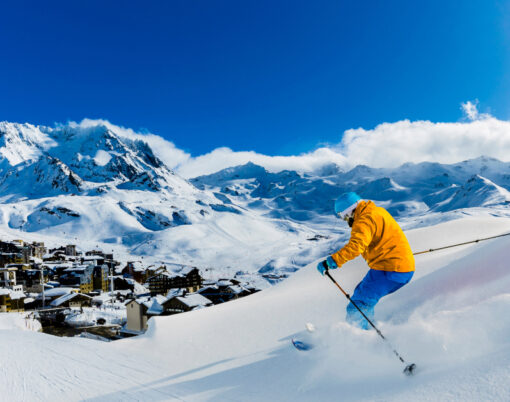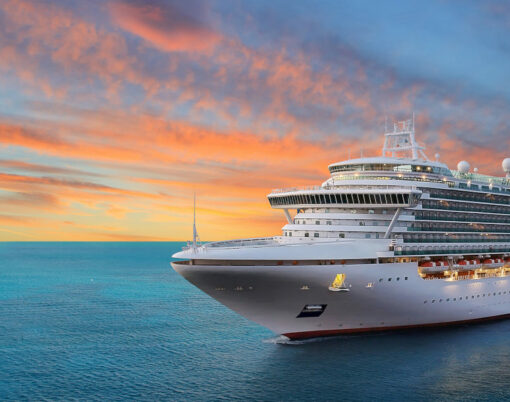The Free and Hanseatic City of Hamburg, Germany’s second largest city after Berlin, offers a fascinating glimpse into what was once a free imperial city of the Holy Roman Empire and a member of the medieval Hanseatic League; a defensive and commercial network of merchant guilds and market towns throughout Northern and Central Europe.
At the apex of the Jutland Peninsula, Hamburg is located on the River Elbe at the head of estuary to the North Sea and at the mouth of the Alster and Bille. A sheltered natural harbour, the Port of Hamburg is Germany’s largest and there is much to explore including the Speicherstadt, the largest warehouse district in the world, which was originally built for the transfer of goods and to avoid taxes. The area features buildings with timber-pile foundations and oak logs, built between 1883 and 1927 and was awarded UNESCO World Heritage status in 2015 alongside the adjacent Kontorhaus District, which is characterised by office buildings in the Brick Expressionism of the 1920s.

Hamburg is a major tourism destination and for those of us who love to explore meandering waterways, the city’s canals and rivers are crossed by more than 2,500 bridges. I headed post haste for St Michael’s, a baroque masterpiece located at Englische Planke. This Lutheran church was originally built during the 17th century but repeatedly destroyed by fire and rebuilt twice with preservation works completed at the beginning of the 20th century.
For hardy souls, the church features a viewing platform at the top of its copper covered spire, which is 132 metres in height and offers a panoramic view over the city. There are 452 steps leading to the platform and I must confess that I took the lift after the first 52 steps and I was richly rewarded with a view of the historic Speicherstadt and Europe’s largest modern inner-city urban development, known as HafenCity, which is beside the Elbe. HafenCity’s main landmark, the glassy construction of Elbphilharmonie concert hall, which rests on the top of an old brick warehouse, is simply stunning and the overall experience of gazing upon the city’s skyline is unforgettable.

Back down at ground level I entered the main entrance beneath a fabulous statue of the Archangel Michael conquering Satan. St Michael’s gold and white interior where the composer Johannes Brahms was baptised in May 1833, is simply magnificent, and the crypt is surely a fitting resting place for two of Germany’s great composers; Johann Mattheson who was born in Hamburg in 1681 and died in 1764, and Carl Philipp Emanuel Bach who died in 1788.
Following my explorations I was feeling a trifle weary and headed for the Fraser Suites, a rather splendid property located on Rödingsmarkt, which is only a ten-minute walk from St Michael’s. After a swift and efficient check-in my suitcase was whisked away and I was escorted to my one-bedroom premier suite covering 41-48 sqm.
The separate living, dining and bedroom areas feature contemporary furnishings and I made full use of the fully-equipped integrated kitchenette, which includes a Nespresso coffee machine and whilst sipping on a piping hot espresso I flipped through the channels on the Smart TV. Hotel facilities include a fitness centre and a rather lovely sauna and there is also a laundry suite with plenty of washers and dryers and a comfy couch, which was the perfect spot for me scroll through my emails whilst waiting for my clothes to dry.

Back out on the city streets I made my way to the Rathaus, located on Market Square in the centre of Hamburg’s Old Town. Completed in 1897, the Neo-Renaissance city hall is a magnificent sight. The sandstone property is exquisitely decorated and features a wide façade with statues of emperors. The copper roof is green as a result of water and carbon dioxide, the soaring tower reaches a height of 367 feet and the balcony features a mosaic of Hammonia; Hamburg’s patron goddess, the city’s motto and coat of arms.
Another of Hamburg’s attractions is the Kunsthalle; a museum consisting of three connected landmark buildings where exhibits include works by Rembrandt, Rubens, Goya, Canaletto and more. For those seeking contemporary art there is much to explore including Picasso, Bacon, Klee, Munch and Andy Warhol. I must confess that I spent quite some time wandering around and examining many of the masterpieces but alas, with time constraints I had to tear myself away and hail a taxi, heading for the Reeperbahn.

And for music lovers, especially for those of us who consider The Beatles to be the greatest rock n’ roll band and absolutely in a league of their own, strolling around the Beatles-Platz, located at the junction of Große Freiheit and Reeperbahn is such a thrill. The homage to the band, which arrived in Hamburg in August 1960 and performed in a number of venues over two years, is designed to resemble a vinyl LP.
Beatles-Platz features contemporary sculptures of Lennon, McCartney, Harrison and past member Sutcliffe and a fusion of Ringo Starr and Pete Best. The titles of around seventy of their songs are etched into the grooves between granite slabs and at the rim of the disc, four flashing lights creates the illusion of a rotating turntable. I was absolutely mesmerised.
Hamburg offers all this and more and I do hope that I get the opportunity to return and to explore more of this fascinating city.
Factbox
Flights from Heathrow to Hamburg take approximately one hour and 30 minutes.
For details of the featured accommodation visit frasershospitality.com
Images (excluding accommodation) courtesy of mediaserver. Hamburg.






















